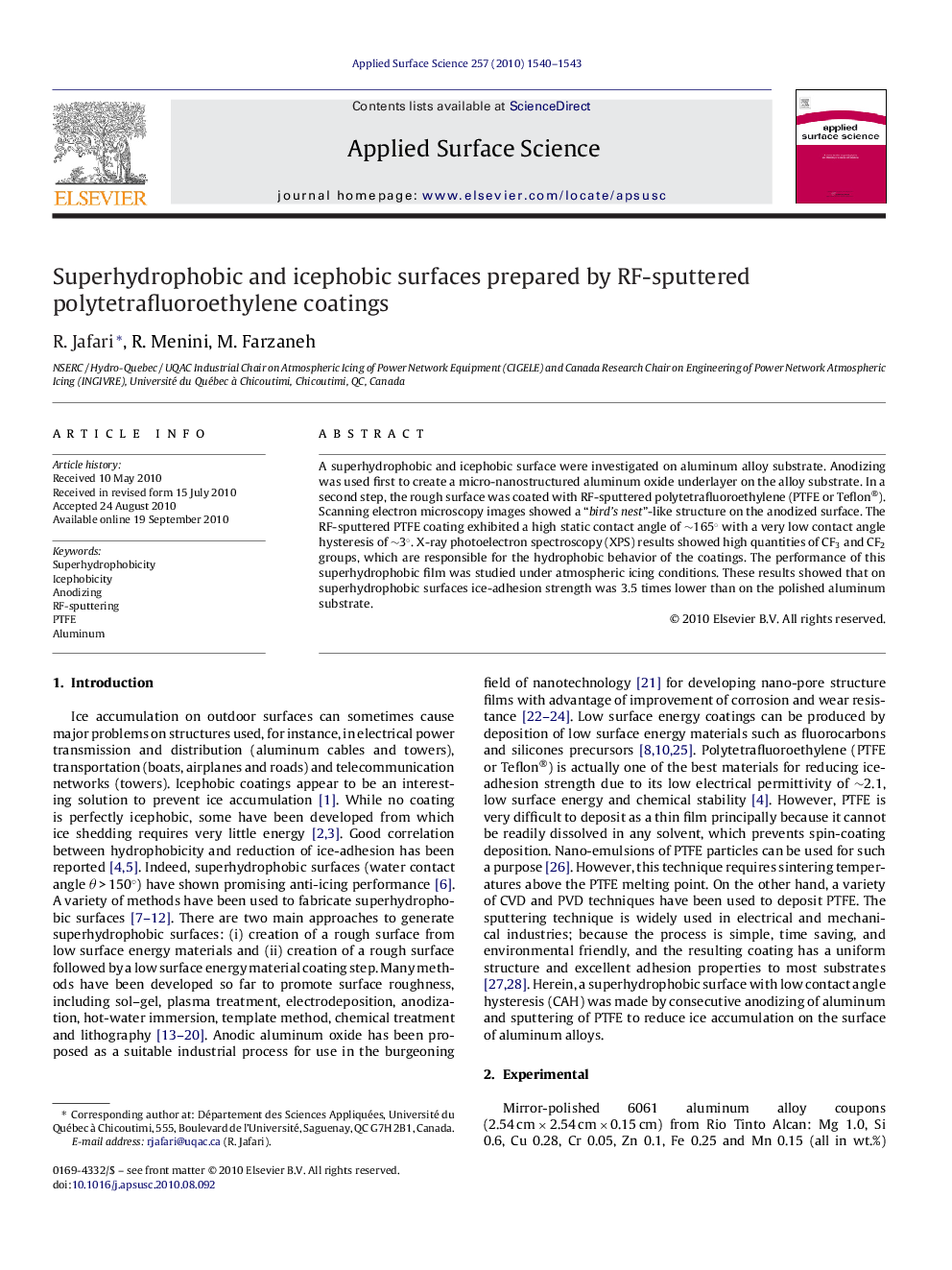| Article ID | Journal | Published Year | Pages | File Type |
|---|---|---|---|---|
| 5359505 | Applied Surface Science | 2010 | 4 Pages |
Abstract
A superhydrophobic and icephobic surface were investigated on aluminum alloy substrate. Anodizing was used first to create a micro-nanostructured aluminum oxide underlayer on the alloy substrate. In a second step, the rough surface was coated with RF-sputtered polytetrafluoroethylene (PTFE or Teflon®). Scanning electron microscopy images showed a “bird's nest”-like structure on the anodized surface. The RF-sputtered PTFE coating exhibited a high static contact angle of â¼165° with a very low contact angle hysteresis of â¼3°. X-ray photoelectron spectroscopy (XPS) results showed high quantities of CF3 and CF2 groups, which are responsible for the hydrophobic behavior of the coatings. The performance of this superhydrophobic film was studied under atmospheric icing conditions. These results showed that on superhydrophobic surfaces ice-adhesion strength was 3.5 times lower than on the polished aluminum substrate.
Related Topics
Physical Sciences and Engineering
Chemistry
Physical and Theoretical Chemistry
Authors
R. Jafari, R. Menini, M. Farzaneh,
